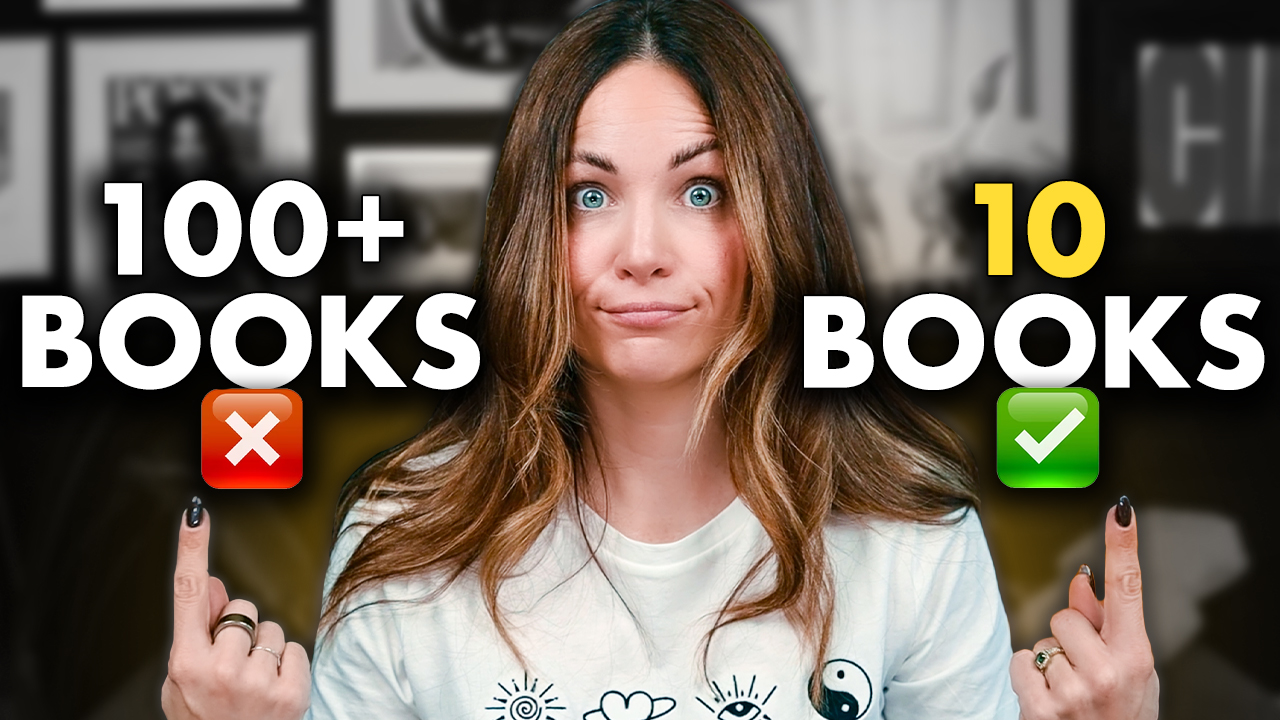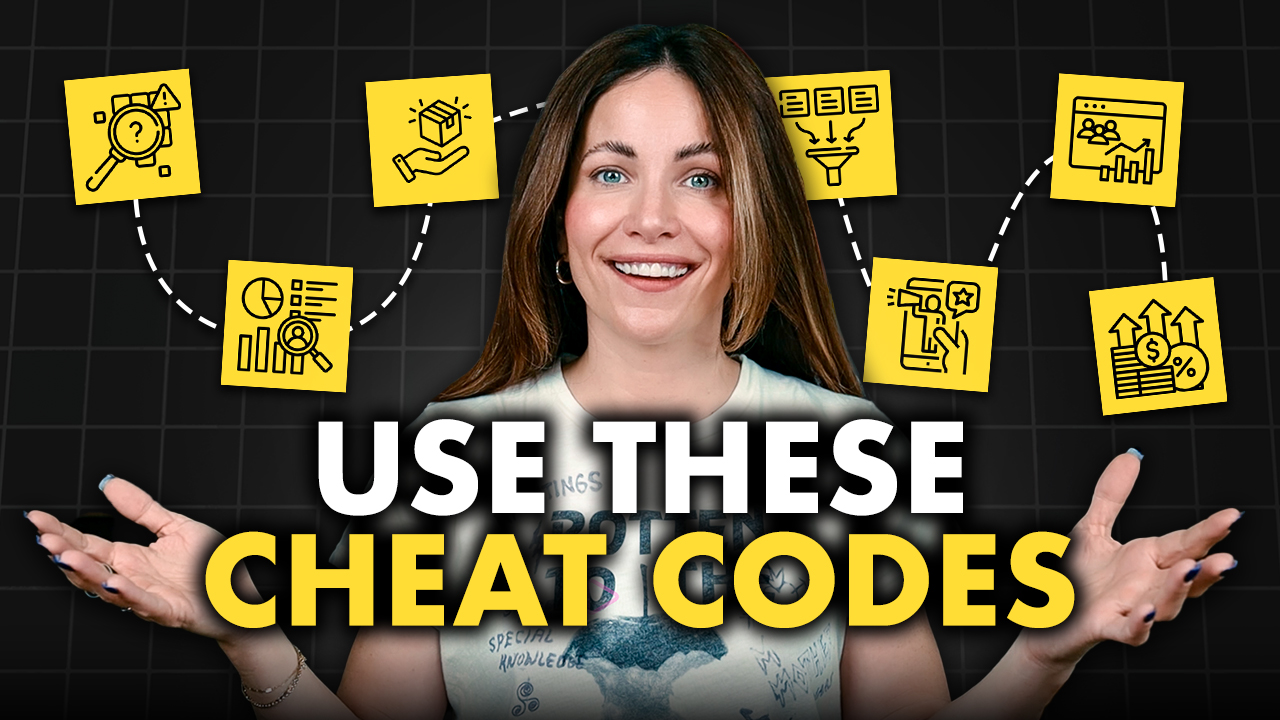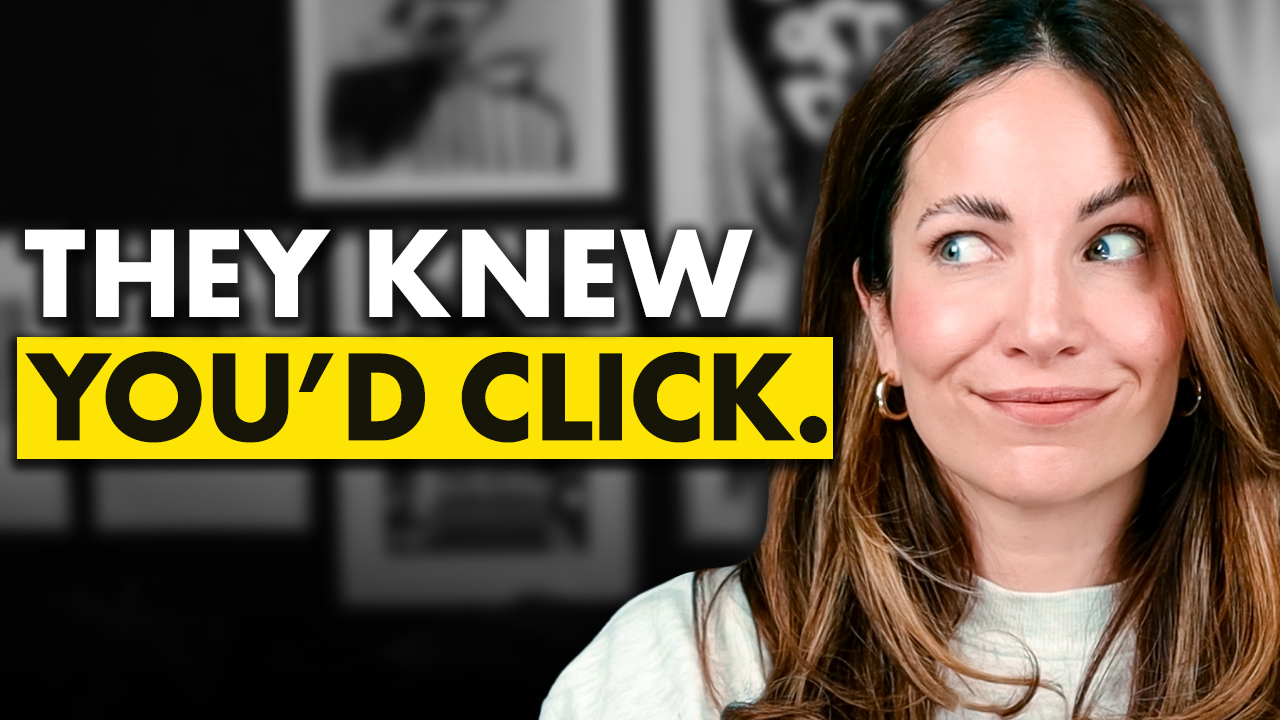Are Long Emails More Effective Than Short Ones for Small Business Email Marketing?
Over the last few months, I’ve been split-testing long emails against shorter emails. One of them got 37.5% more clicks. Can you guess which?
If you write your own emails, run your own campaigns, or help clients get better results online, you NEED to see this.
In this blog post, I’m showing you the exact emails I tested side by side and breaking down why one completely outperformed the other.
Let’s dive in.
What I Tested
So both of these emails had the same goal – to send people to a YouTube video where I shared an email that brought in over $35,000 in sales.
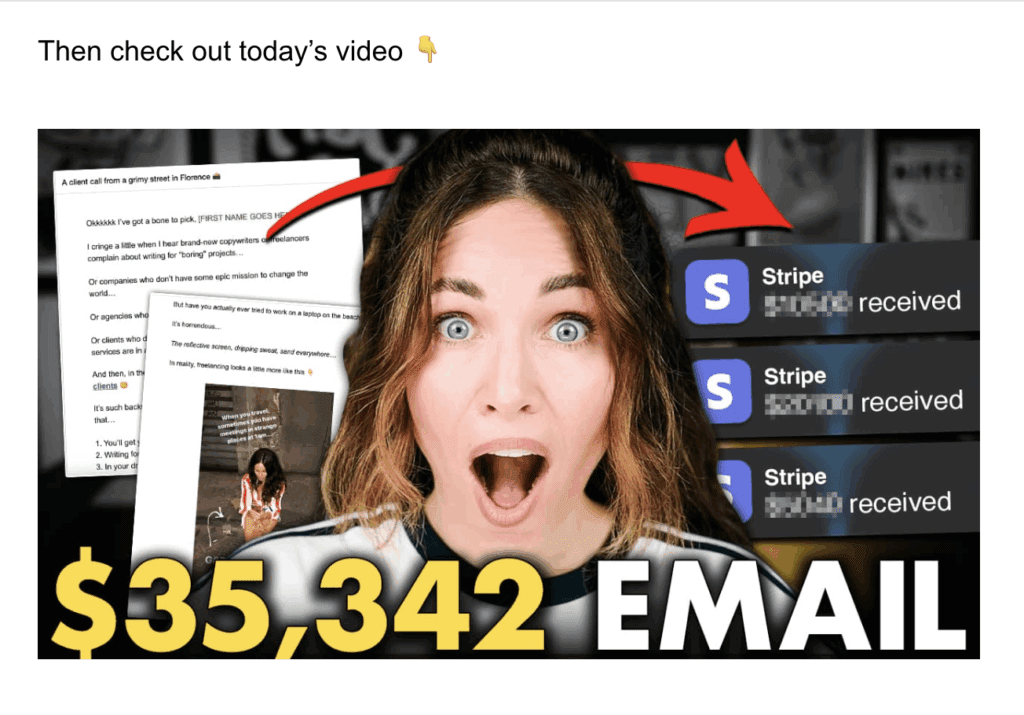
Now if you’re on my email list, then you know that my content emails are usually on the longer side.
They are longer, more conversational and almost involve a bit of storytelling.
But after seeing the shocking results of my recent landing page split-test results.
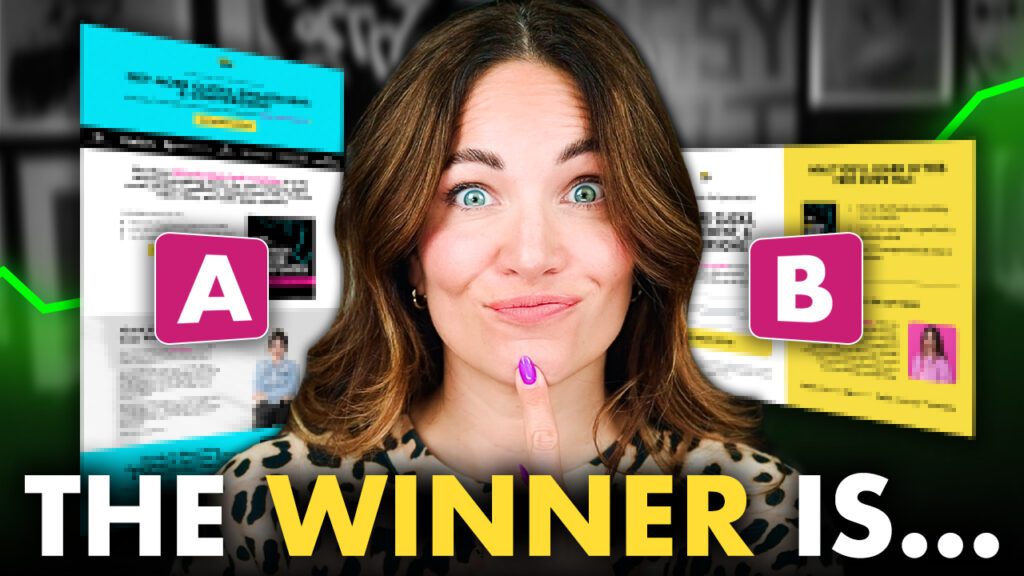
I was super curious to see what would happen if I tested shorter, well, everything.
So I wrote two versions of the same email: a long version and a short version.
Here’s how it went down.
The Data
Alright, so let’s talk numbers.
Because you know me, I don’t do vague “trust me” marketing tips. I do data-backed experiments so you can actually see what’s working right now.
Here’s the receipts:
The longer version of the email, version B, had a click-through rate of 1.6%.
And the short version?
2.2%. That’s a 37.5% increase in clicks.
Yeah. Imagine spending hours crafting the perfect email and then a tiny, two-sentence email beats it by 37.5% more clicks.

The shorter email got nearly DOUBLE the engagement with a fraction of the words.
Let’s take a look at these emails side by side.
Side-by-Side Comparison
The short email said:
“This one email brought in over $35K and it wasn’t even a sales email. Watch as I break it down – line by line. Talk soon, Alex.”
That’s it. Two sentences. It’s basically just a really strong hook and call to action.
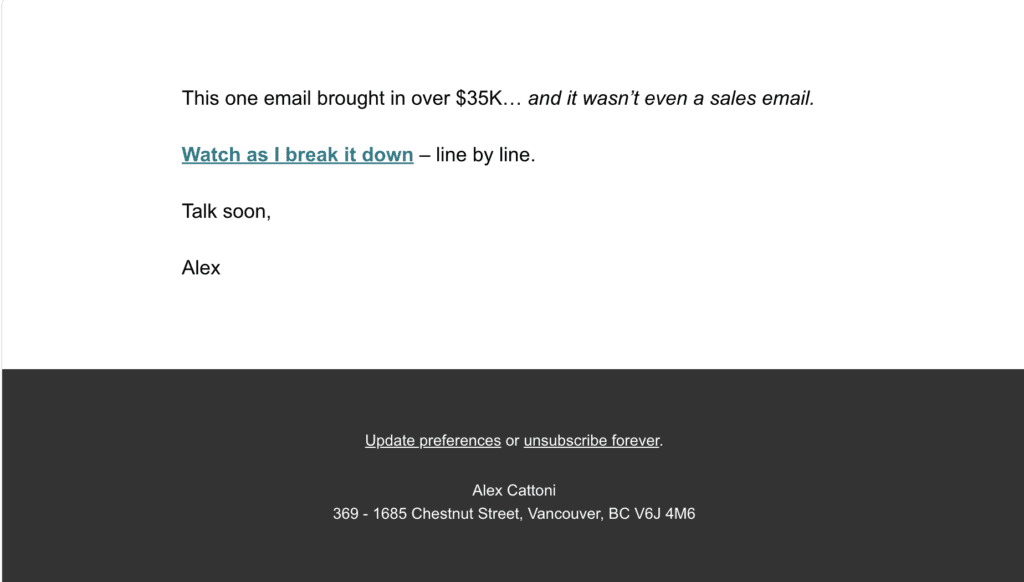
Now the longer version started with the exact same hook.
But it also included multiple paragraphs, a P.S. line, and even a mini sales pitch for one of my courses.
You can see I provided a little extra context about what kind of email this video is about.
I mentioned the “promise” or “transformation” – which in this case is: getting better at writing emails that don’t give your reader the ick.
Then I have an image here, which is great for capturing attention.
I added a brief bullet list of everything they’ll learn inside the video – so if the main hook wasn’t enticing enough, maybe one of these bullets will grab their interest.
I end with a CTA button.
And here, I added a little P.S. line plug for my SPARK membership – which I didn’t mention at all in the first email.
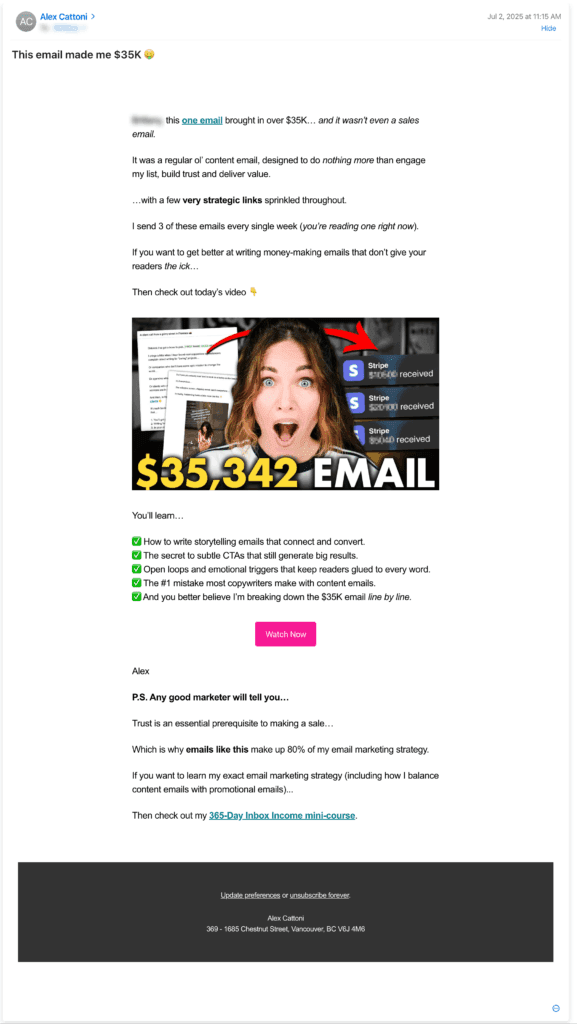
So what happened? Well, I think this is an example where more copy, doesn’t mean more engagement. That extra length might’ve actually worked against the goal of the email in this case.
The short version was easier to scan. It created enough curiosity without overcomplicating it.
And that’s the key.
It teased the $35K email and MADE people click in order to close the loop the hook opened.
In hindsight, the long version may have OVER-explained what was in the video.
And by doing so, it actually REMOVED the mystery that makes people want to click.
So instead of thinking, “Ooh I gotta see this.” They’re like, yeah I get the gist of it, thanks and moved on.
The Big Marketing Takeaway
So what’s the big takeaway here? Short emails work best when your goal is to JUST get the click.
That’s why I call this type of email a “Click Magnet” – it’s short and sweet with a blind open loop that people MUST click to satisfy.
This type of email works great WHEN there is already trust built with your audience.
And you know that WHATEVER you’re delivering on the other side of that blind open loop, will in fact deliver on what you’re promising.
I love to use this type of email when I’m sending to my content, like my YouTube videos.
BUT – and this is important.
These types of emails do NOT work with colder audiences. Imagine getting an email like this from someone you didn’t know, like or trust.
You’d be like NOPE bye.
It would also be really frustrating for the reader to click that link only to be taken to a sales page where you had to BUY something in order to satisfy that open loop.
That’s a quick way to break trust, in my opinion.
These emails are also great when used SPARINGLY. If every single email read like a brief text message, enticing you to click, you’d probably get frustrated after a while and lose trust.
So the lesson here: Short emails don’t ALWAYS win.
Context matters. The goal of your email matters. So PLEASEEEE don’t walk away from this post thinking you can get away with ONLY writing two sentence emails.
If you are looking to BUILD trust with your audience and prime your list for long-term sales, that’s where longer, story-driven formats still shine.
In my opinion, your emails should VARY in length. There is no “perfect” length, just like a conversation with a friend – some are short, some are long.
Match the length of your email to meet your goal.
Short emails grab attention and get people to click fast to CLOSE A LOOP.
Long emails build trust and drive long-term sales.
Now, if you want to get really good at this. I’ve got something perfect for you.
In my FREE Email Story workshop, I’ll share with you my exact email storytelling formula for writing emails that build trust and SELL.
You’ll walk away with endless story ideas, prompts, and questions to help you extract amazing stories to tell your list.
And then I’ll help you with the hardest part of all — which is, of course, connecting that story to the point of your email in a way that flows, feels natural, and MAKES SENSE.
And if you want to read the blog post on the exact email that made over $35,000 – I break it all down line by line in this post right here.
Until next time, I’m Alex. Ciao for now!
